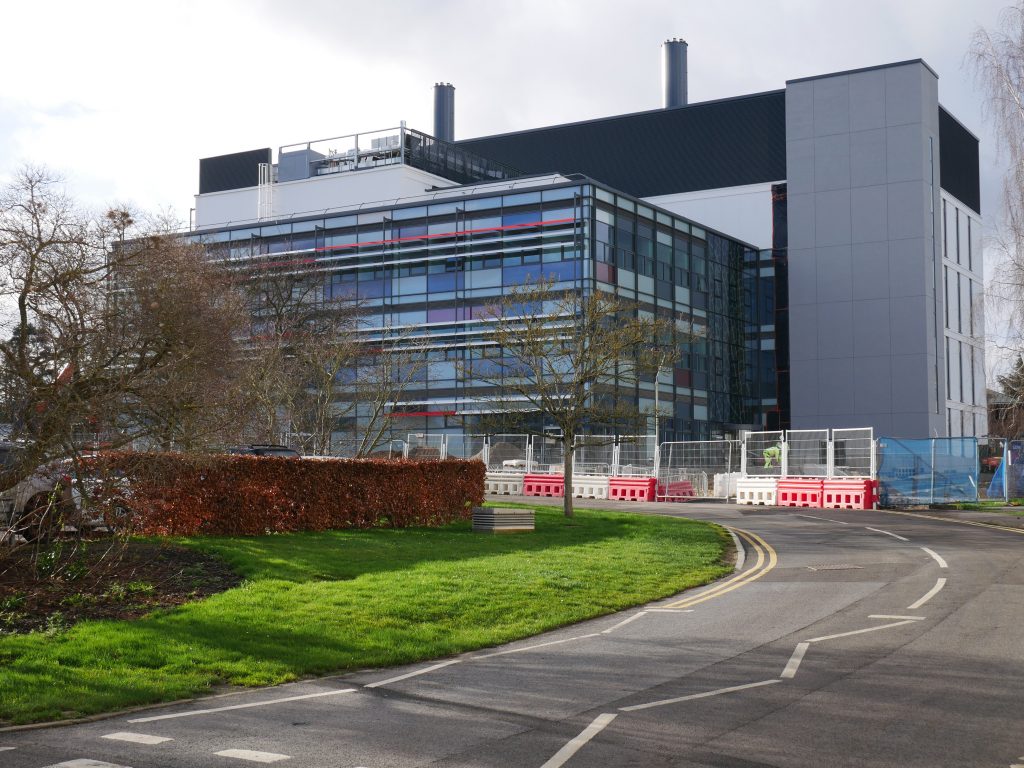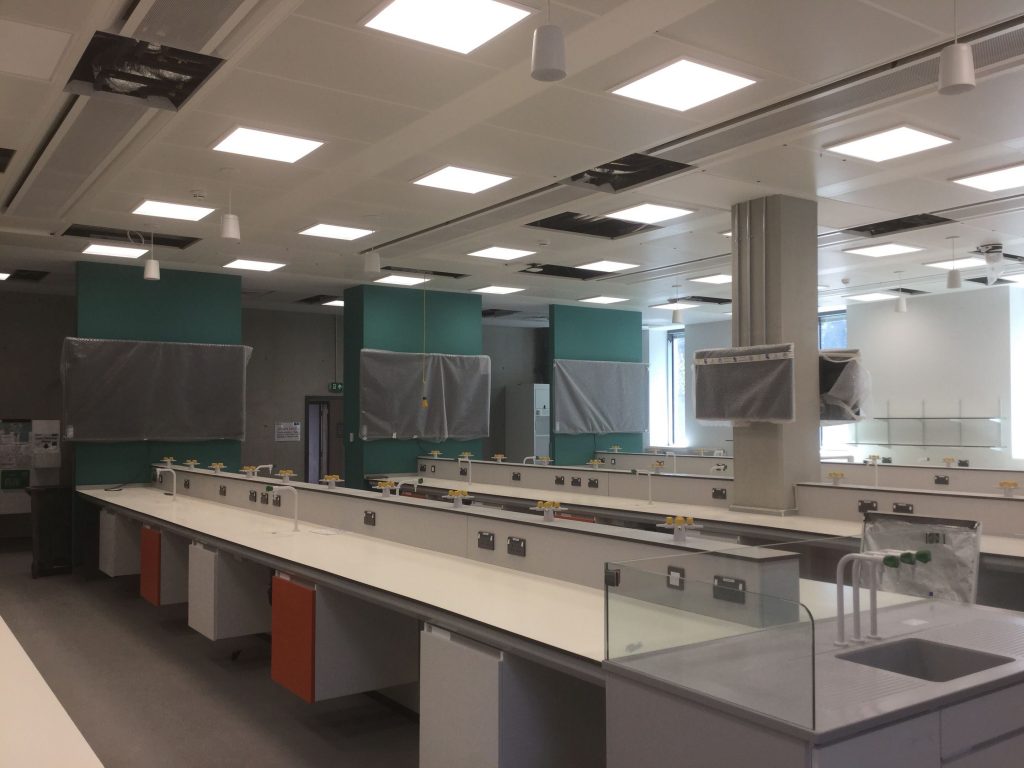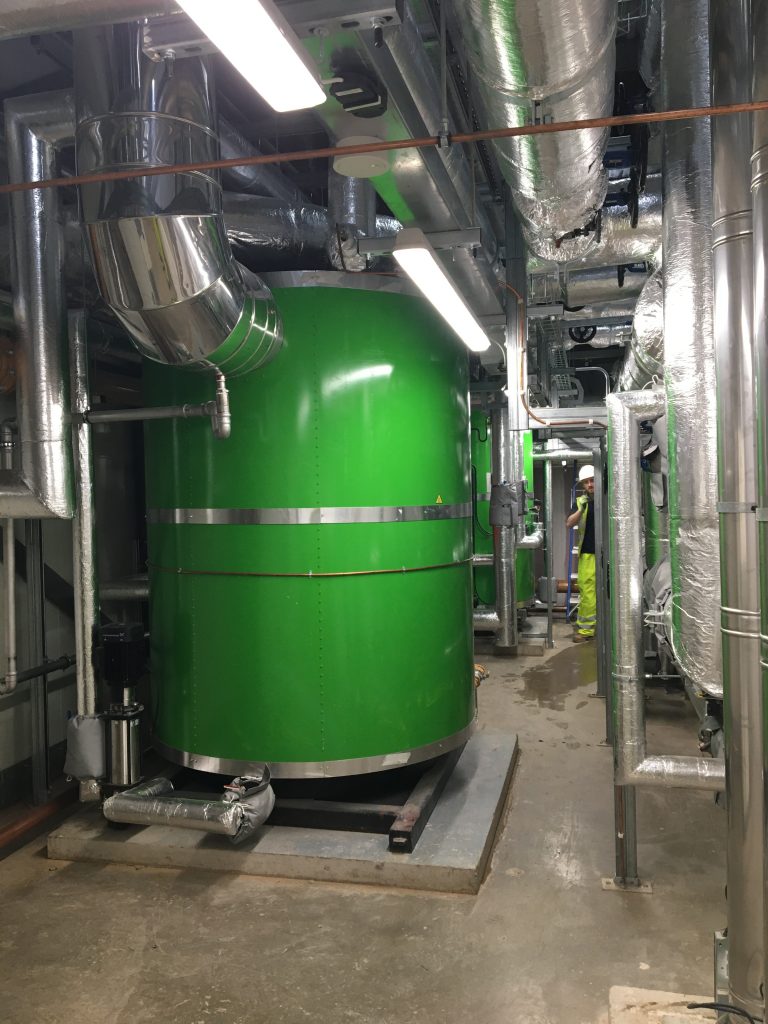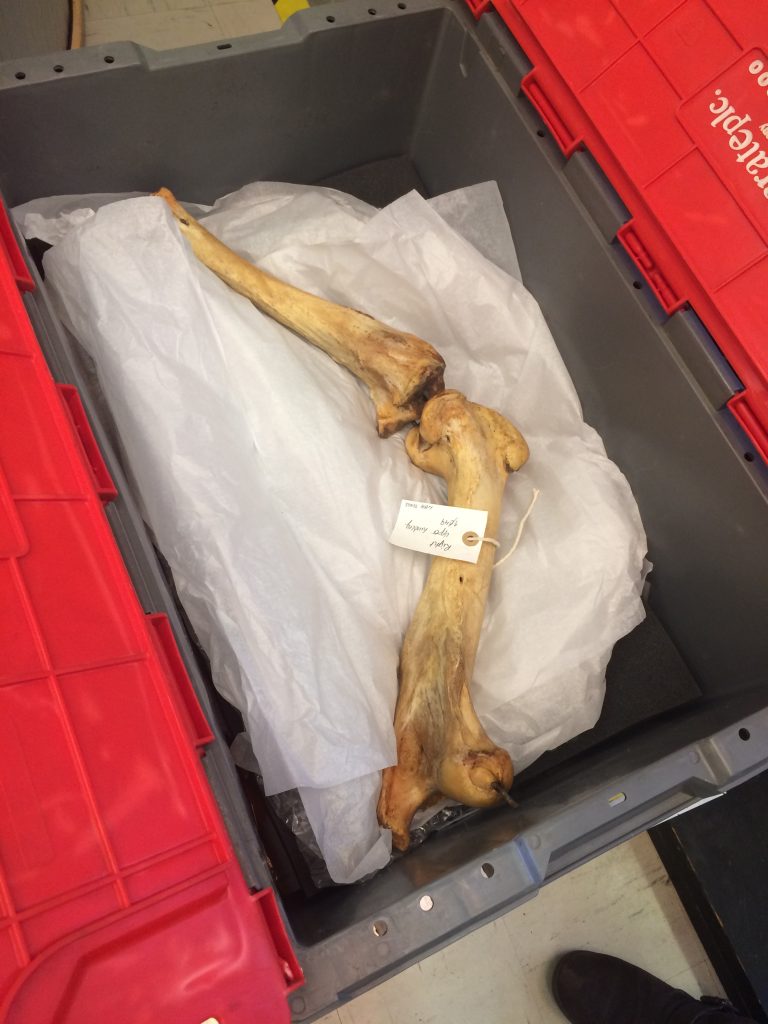We have seen considerable growth in our Life Sciences research and teaching in recent years and the new Health and Life Sciences building, due to open in autumn 2020, is purpose-built to accommodate this. The move into the building will bring about closer integration of the School of Biological Sciences, consolidating the School from five separate buildings into one. Along with teaching labs and seminar rooms, research labs and write-up areas, the building will also include a state-of-the-art Bio-Resource Unit, a new home for the Cole Museum of Zoology and its collections, a café and social space.

Over the past few months, Jeremy Le Lean from the Staff Engagement team has led small group tours around the building site for colleagues from the Research and Technical Services team and others who will help manage the building space, for example the Student Timetabling and Room Booking Operations team and Building Support Officers. Here Jeremy describes the new building and how it will transform the working environment for the staff and students of SBS.
The building incorporates the latest sustainable construction techniques and energy efficiencies to help reduce carbon emissions. And its design and construction reflects the work that will be carried out in it. Not visible now, the building is formed from two parts – having an especially rigid concrete frame to support laboratories and associated apparatus, and using a steel frame for the offices. The concrete frame gives the extra stability required for the lab apparatus that requires very low levels of vibration. The research labs will cater for both biomedical sciences and whole organism biology, to provide flexibility and increase utilisation. The teaching lab on the ground floor can be subdivided to create up to four separate spaces creating flexible labs, suitable for wider usage including research project work or exams.

As well as moving much of our existing research equipment into the building, including the cardiovascular research unit, the latest technology and equipment will be installed. This will upgrade the current provision and reduce its carbon footprint through increased efficiency and the centralised supply of some services. For example, the autoclaves will be supplied by (literally) green steam boilers and the -80°C freezers will be centrally rather than individually supplied with coolant. The freezers allow storage of biological material supporting microbiological research in the labs on the first floor.

The second floor accommodates research labs and a suite of controlled environment rooms will allow researchers to specify conditions to investigate, for example, the effects of climate change on populations.
The Cole Museum of Zoology will be housed in a spacious atrium on the ground floor. While there is a lot of preparation involved in the move, with all specimens needing to be counted, cleaned and packed, this presents an opportunity to reinterpret the collection for modern museum audiences. The story of the development of the Cole Collection and the Museum will be told through a series of bespoke display cases and a virtual specimen screen, with a new museum website linked to the University Museums and Collections portal. The Museum will share the space in the atrium with the Trilobite Café, taking pride of place as people enter the building and providing flexible space similar to the popular new Library foyer for research engagement events, public events and social events.

The third floor will contain the Bio-Resource Unit, a specialised safe and secure facility where animals are looked after, and where research using these animals is performed. It represents a major upgrade on the current unit with many new features, making tasks like the maintaining the unit, cleaning and disposal of bedding, and washing of equipment all cleaner and safer. Researchers will be able to undertake a wider range of research with an increase in the number and type of procedures available, although this is not expected to lead to an increase in the numbers of experiments in which animals are used.
The new Health and Life Sciences building is an inspiring and modern space that demonstrates our commitment to investing in the future of our university. By providing flexible space for research, teaching and learning this will provide the best experience for colleagues and students alike.
